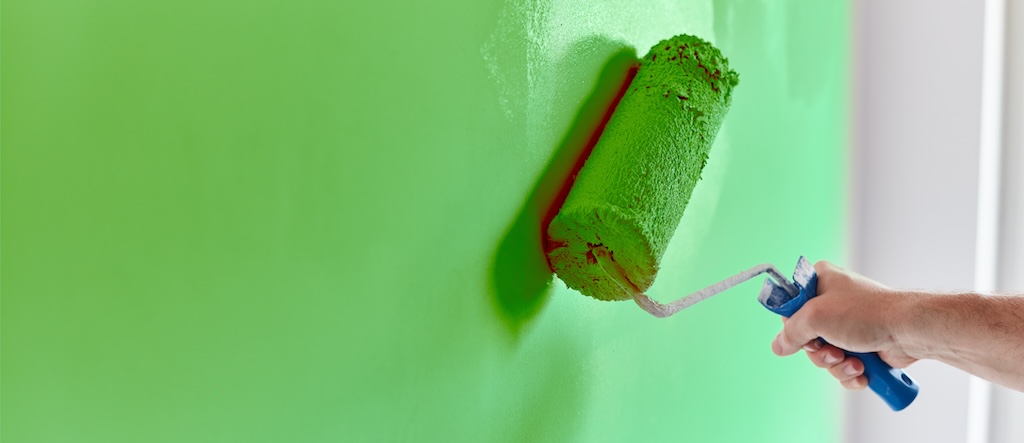In recent years, there has been a growing awareness of the importance of creating healthier living environments. One of the key elements in this regard is the choice of paint used in our homes. Traditional house paints often contain harmful chemicals that can affect indoor air quality and health. Eco-friendly paints, on the other hand, offer a safer alternative, contributing to a healthier home environment. This blog explores how choosing eco-friendly paints can make your home healthier and what factors to consider when selecting them, providing insights into the benefits of making such a choice.
Understanding the Health Risks of Traditional Paints
Conventional house paints contain volatile organic compounds (VOCs), which are chemicals that evaporate at room temperature. These compounds can release toxins into the air long after the paint has dried, leading to indoor air pollution. Exposure to high levels of VOCs can cause headaches, dizziness, respiratory issues, and even long-term health problems. This is particularly concerning in homes with children, the elderly, or individuals with allergies or asthma. The long-term exposure to VOCs from traditional paints can significantly compromise indoor air quality and pose a risk to health, which is why shifting to safer alternatives is crucial.
The Advantages of Eco-Friendly Paints
Eco-friendly paints are formulated to minimize or eliminate the presence of harmful chemicals, including VOCs. They use natural pigments and binders, making them safer for both the environment and indoor air quality. These paints contribute to a healthier living environment by reducing the risk of respiratory problems and other health issues associated with toxic paint fumes. By opting for these paints, homeowners can significantly improve the air quality within their homes while also protecting the environment. Eco-friendly paints are increasingly recognized not only for their health benefits but also for their role in sustainable practices.
Types of Eco-Friendly Paints
Low-VOC and No-VOC Paints
These paints have reduced levels of volatile organic compounds compared to traditional paints. They are less harmful and emit fewer odors, making them a popular choice for interior painting. Low-VOC and no-VOC paints are available in a wide range of colors and finishes, offering both health benefits and aesthetic versatility. They represent a practical compromise, significantly lowering health risks without sacrificing quality and durability. These types of paints are ideal for households looking to minimize their environmental impact without compromising on quality.
Natural Paints
Natural paints are made from organic materials such as plant dyes, water, essential oils, and natural latex. They are completely biodegradable and free from synthetic chemicals, making them an excellent choice for a healthy home environment. However, their color range might be more limited compared to synthetic paints. These paints are particularly suitable for anyone looking to create an entirely natural living environment, as they contain no synthetic compounds at all. While the palette may be limited, the colors available are rich and vibrant, providing a unique aesthetic that complements a natural lifestyle.
Mineral-Based Paints
Mineral-based paints, including lime and clay paints, are another eco-friendly option. They offer natural properties such as breathability and resistance to mold, contributing to better air quality and a healthier living space. These paints not only promote a healthier indoor climate but also add to the aesthetic quality of the interior with their unique textures and finishes. Mineral-based paints are particularly suited for historic buildings or those looking for a rustic or artisanal finish. They are durable, eco-friendly, and can enhance the historical integrity and aesthetic value of older homes.
Considerations When Choosing Eco-Friendly Paints
When selecting eco-friendly paints, consider the following factors:
- Indoor Air Quality: Opt for paints that contribute to a safer indoor environment by minimizing or eliminating VOC emissions.
- Durability: Ensure that the paint is durable and suitable for the intended space. Some eco-friendly paints may require more frequent touch-ups or specific application techniques.
- Aesthetics: Consider the range of colors and finishes available. While eco-friendly paints used to have limited options, many brands now offer a diverse palette.
- Certifications: Look for certifications that guarantee the paint’s eco-friendly properties, such as Green Seal or EcoLogo.
These factors are critical in ensuring that the eco-friendly paint you choose meets both your aesthetic and health standards.
Final Thoughts
Choosing eco-friendly paints is a significant step towards creating a healthier home. These paints not only safeguard your family’s health but also contribute to environmental sustainability. With advancements in paint technology, eco-friendly options are now more accessible, durable, and aesthetically pleasing than ever before. They provide a viable option for those looking to improve their home’s environmental footprint while ensuring a safe and healthy living space. Embracing these paints can lead to a substantial improvement in the quality of life, demonstrating that small changes in our choices can have profound impacts on our health and the planet. For more insights into creating a healthy and eco-friendly living space, visit our website at sisupainting.com and explore our blog at sisupainting.com/blog.





No comment